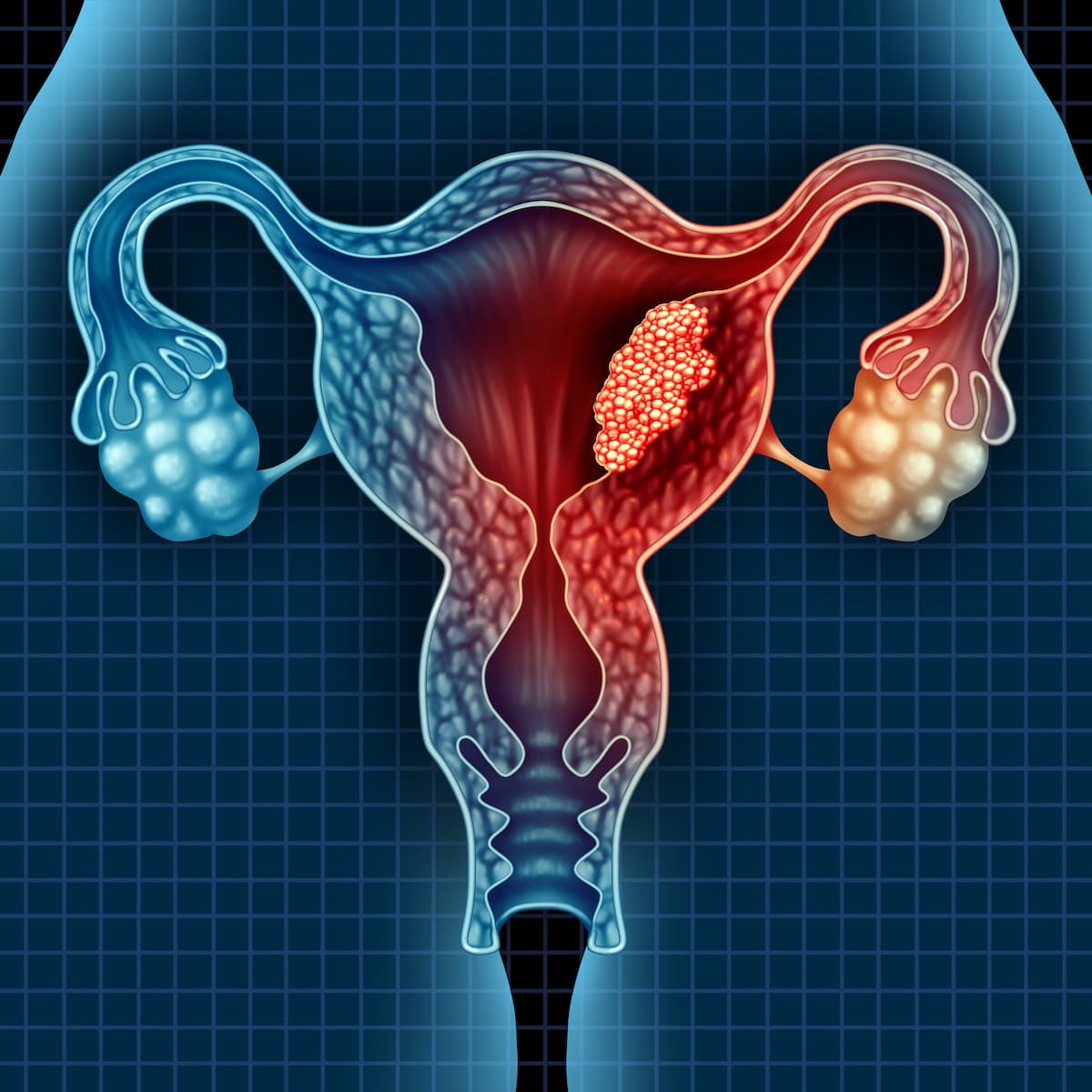Dostarlimab Yields Benefits in Endometrial Carcinoma Molecular Subgroups
Data from the phase 3 RUBY trial may support the use of dostarlimab plus chemotherapy as a new standard of care in patients with newly diagnosed primary advanced or recurrent endometrial carcinoma.
"These findings further support the use of dostarlimab and carboplatin/paclitaxel as a new standard of care in patients with newly diagnosed primary advanced or recurrent EC," according to Mansoor Raza Mirza, MD.

Treatment with dostarlimab-gxly (Jemperli) plus chemotherapy produced clinical benefits in advanced endometrial carcinoma (EC) subgroups, including those with mismatch repair deficient/microsatellite instability-high (dMMR/MSI-H) disease, TP53 mutations, and NSMP, according to data from the phase 3 ENGOT-EN6-NSGO/GOG-3031/RUBY trial (NCT03981796) presented at the 2023 European Society for Medical Oncology Congress (ESMO).1 However, investigators reported that patients with POLε mutations demonstrated no progression in either the treatment or placebo arm.
Findings showed that patients with dMMR/MSI-H had a progression-free survival (PFS) rate of 57.0% in the dostarlimab arm vs 10.2% in the placebo arm (HR, 0.31; 95% CI, 0.17%-0.56%); in the TP53 mutation subgroup, dostarlimab had a PFS rate of 32.4% vs 17.8% in the placebo arm (HR, 0.55; 95% CI, 0.30%-0.99); and in the NSMP group, dostarlimab had a 31.0% PFS rate vs 20.1% in the placebo arm.
“The TP53 mutation group was surprising to me,” said lead author Mansoor Raza Mirza, MD, chief oncologist, Rigshospitalet, Copenhagen, Denmark, said, during the presentation of the data.
Turning to overall survival (OS) according to molecular subgroup, Mirza noted similar trends. “We see a significant improvement in OS from 55% to 78% with a hazard ratio of 0.40 in the dMMR/MSI-H subgroup, and surprisingly, the same hazard ratio in the TP53 mutation subgroup with an OS rate of 70.8% in the dostarlimab arm vs 33.2% in the placebo arm,” Mirza said. Mirza said the NMSP subgroup did not have enough events although there was a positive trend but will require more follow-up.
In part 1 of the RUBY trial,2 patients with primary advanced or recurrent EC were randomly assigned to receive either dostarlimab-gxly (Jemperli) at 500 mg, carboplatin at 5 mg/mL, and paclitaxel at 175 mg/m2 every 3 weeks for 6 cycles, or placebo, carboplatin at 5 mg/mL, and paclitaxel at 175 mg/m2 on the same schedule. This was followed by dostarlimab at 1000 mg every 6 weeks for up to 3 years with a similar schedule for placebo. The primary end points were progression-free survival (PFS) by investigator assessment and overall survival (OS). Secondary end points included PFS, objective response rate (ORR), duration of response (DOR), and safety.
After a median duration of follow-up of 24.8 months, the dMMR/MSI-H cohort showed significant improvement in PFS, with the dostarlimab arm at 61.4% compared with placebo at 15.7% (HR, 0.28; 95% CI, 0.162%-0.495%; P < .0001).
“In the overall population, the probability of PFS doubled from 18.1% to 36.1% in the intention-to-treat population,” Mirza said after a median duration follow-up of 25.4 months (HR, 0.64; 95% CI, 0.507%-0.800%; P < .0001).
The overall survival trend also favored patients who received dostarlimab and who had the dMMR/MSI-H mutation, with a probability of survival of 83.3% vs 58.7% in the placebo arm (HR, 0.30; 95% CI, 0.127%-0.699%). In the overall population, the probability of survival was 71.3% in the dostarlimab arm vs 56.0% in the placebo arm (HR, 0.64; 95% CI, 0.464%-0.870%; P < .0021).
“This finding was important despite the fact that about one-third of the population in the placebo arm received immunotherapy upon progression,” Mirza said.
“This phase 3 trial evaluated patients with locally advanced and recurrent disease who had received adjuvant chemotherapy for early-stage disease,” Mirza said. “They could enter the trial if they had a platinum-free interval of more than 6 months,” Mirza continued.
When PFS was evaluated according to histological subgroups, the treatment arms all benefitted, including patients with endometrioid carcinoma, carcinosarcoma, serous adenocarcinoma, and other.
According to the RUBY molecular classification algorithm in which whole exome DNA sequencing (WES) was performed on 400 of 495 patients, it was determined that 5 patients had a POLε mutation (1.2%), 22.75% had dMMR/MSI-H, 22% were TP53 aberrant, and 54% were NSMP.
Baseline characteristics and demographics were equal across the mutational subgroups for age, race, ECOG performance status, and median body mass index, although Mirza noted that in the Black population there was a high number of patients with TP53 mutation but had been observed in past studies.
“These data are critical to help the scientific community understand EC,” Mirza said. “These findings further support the use of dostarlimab and carboplatin/paclitaxel as a new standard of care in patients with newly diagnosed primary advanced or recurrent EC,” Mirza concluded.
References
- Mirza MR, Sharma S, Herrstedt J, et al. Dostarlimab + chemotherapy for the treatment of primary advanced or recurrent endometrial cancer: analysis of progression-free survival and overall survival outcomes by molecular classification in the ENGOT-EN6-NSGO/GOG-3031/RUBY trial. Presented at the European Society of Medical Oncology (ESMO) Congress. October 20-24, 2023. Madrid, Spain. Abstract 740MO.
- Mirza MR, Chase DM, Slomovitz BM, et al. Dostarlimab for primary advanced or recurrent endometrial cancer. N Engl J Med. 2023;388(23):2145-2158. doi:10.1056/NEJMoa2216334